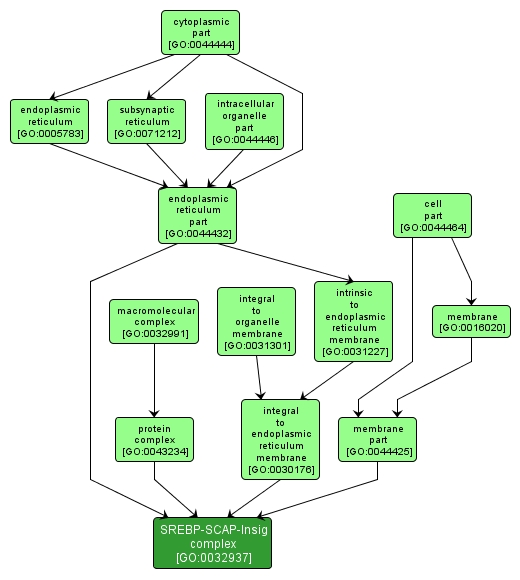GO TERM SUMMARY
|
| Name: |
SREBP-SCAP-Insig complex |
| Acc: |
GO:0032937 |
| Aspect: |
Cellular Component |
| Desc: |
A protein complex formed by the association of sterol regulatory element binding protein (SREBP), SREBP-cleavage-activating protein (SCAP), and an Insig protein (Insig-1 or Insig-2) the ER membrane. |
|

|
INTERACTIVE GO GRAPH
|














